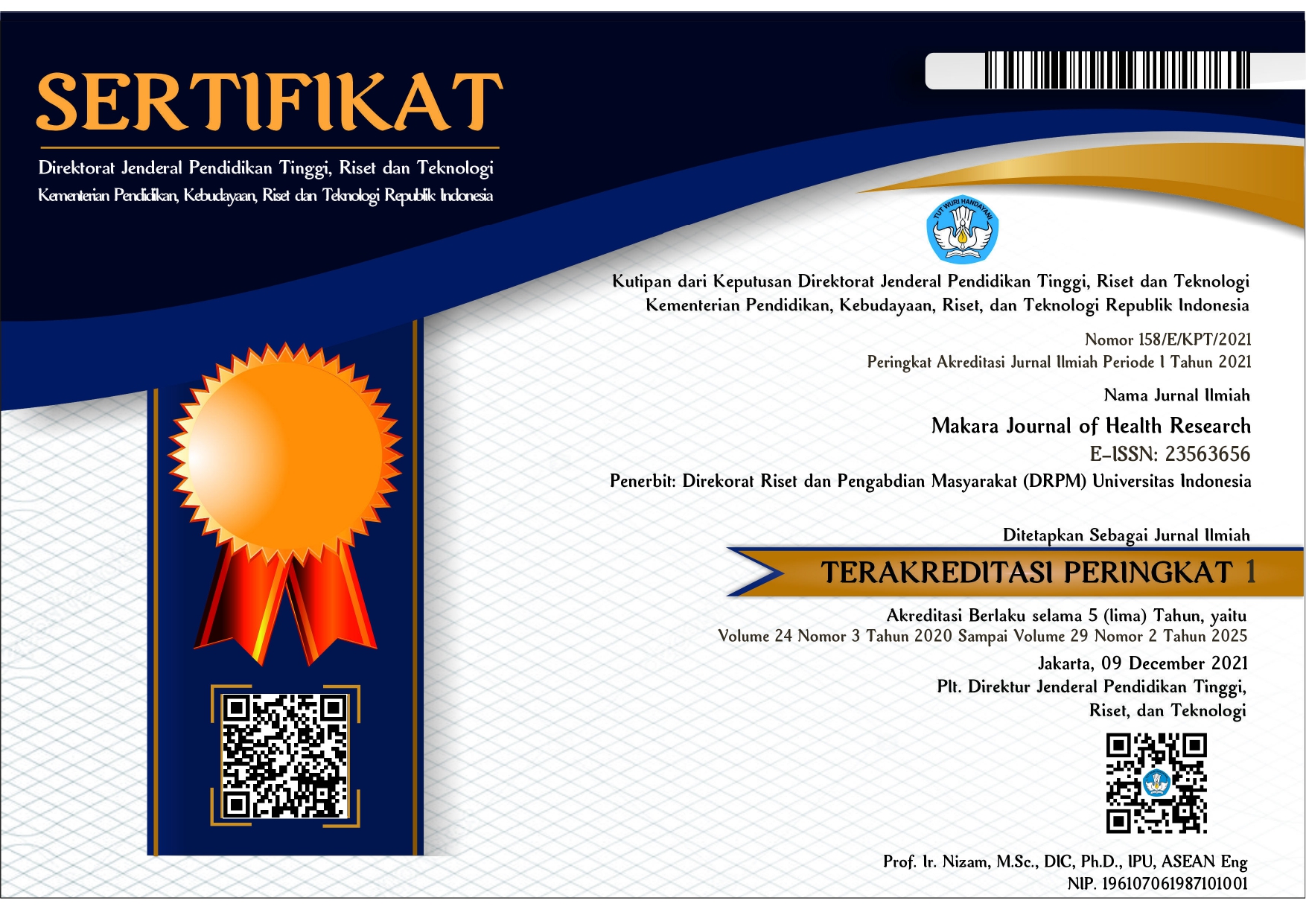ORCID ID
Muhammad Umer Ghori: 0009-0005-1176-7690
Muhammad Shareef Masood: 0000-0003-2395-7721
Muhammad Shafique: 0000-0003-0554-7622
Humera Fiaz: 0000-0002-3030-4684
Misbah Hussain: 0000-0001-8825-917X
Fazli Rabbi Awan: 0000-0002-8210-705X
Abstract
Background: Obesity and dyslipidemia are significant risk factors for cardiovascular disorders (CVDs), yet have not been extensively studied in Pakistani subjects. Therefore, this retrospective observational study was undertaken to investigate the association of obesity-related traits and serum lipid parameters in CVD patients from Faisalabad, Pakistan.
Methods: A total of 403 CVD patients and 226 healthy controls were included. CVD patients were enrolled from the Allied Hospital and the Faisalabad Institute of Cardiology. Obesity-related traits [body mass index (BMI), waist and hip circumference (WC and HC), and waist-to-hip ratio (WHR)], serum lipid parameters, and blood pressure of all subjects were measured. Data was analyzed in SPSS v.21.
Results: Results showed significantly higher WC, HC, WHR, systolic and diastolic blood pressure in CVD patients as compared to healthy controls. Likewise, there were significant gender specific differences in these parameters in both the CVD patients and healthy control groups. Additionally, Pearson analysis revealed significant correlations between lipid parameters and obesity-related traits in CVD patients.
Conclusion: This study showed a significant correlation between lipid profile and obesity-related traits in CVD patients from Faisalabad, Pakistan. These findings highlight the importance of early management of dyslipidemia and obesity to prevent later sequelae of CVD.
References
- Hedayatnia M, Asadi Z, Zare-Feyzabadi R, Yaghooti-Khorasani M, Ghazizadeh H, Ghaffarian-Zirak R, et al. Dyslipidemia and cardiovascular disease risk among the MASHAD study population. Lipids Health Dis. 2020;19:42.
- Mente A, Yusuf S, Islam S, McQueen MJ, Tanomsup S, Onen CL, et al. Metabolic syndrome and risk of acute myocardial infarction: A case-control study of 26,903 subjects from 52 countries. J Am Coll Cardiol. 2010;55:2390–8.
- Luo Y, Liu J, Zeng J, Pan H. Global burden of cardiovascular diseases attributed to low physical activity: An analysis of 204 countries and territories between 1990 and 2019. Am J Prev Cardiol. 2024;6:100633.
- Ortega FB, Lavie CJ, Blair SN. Obesity and cardiovascular disease. Circ Res. 2016;118:1752–70.
- Afshin A, Reitsma MB, Murray CJL. Health Effects of Overweight and Obesity in 195 Countries. N Engl J Med. 2017;377:1496–7.
- Zubair F, Nawaz SK, Nawaz A, Nangyal H, Amjad N, Khan MS. Prevalence of cardiovascular diseases in Punjab, Pakistan: A cross-sectional study. J Public Health. 2018;26:523–9.
- Basit A, Tanveer S, Fawwad A, Naeem N, Members N. Prevalence and contributing risk factors for hypertension in urban and rural areas of Pakistan; A study from second National Diabetes Survey of Pakistan (NDSP) 2016–2017. Clin Exp Hypertens. 2020;42:218–24.
- Malik MS, Qayyum W, Farooq A, Waqas A, Sukhera AB, Khalid MA, et al. Dietary patterns, exercise, and the metabolic syndrome among young people in Urban Pakistan (Lahore). Metab Syndr Relat Disord. 2020;18:56–64.
- Battineni G, Sagaro GG, Chintalapudi N, Amenta F, Tomassoni D, Tayebati SK. Impact of obesity-induced inflammation on cardiovascular diseases (CVD). Int J Mol Sci. 2021;22:4798.
- Katsiki N, Banach M, Mikhailidis D. Is type 2 diabetes mellitus a coronary heart disease equivalent or not? Do not just enjoy the debate and forget the patient! Arch Med Sci. 2019;15:1357–64.
- Janiszewski PM, Janssen I, Ross R. Does waist circumference predict diabetes and cardiovascular disease beyond commonly evaluated cardiometabolic risk factors? Diabetes Care. 2007;30:3105–9.
- Mohammadifard N, Nazem M, Sarrafzadegan N, Nouri F, Sajjadi F, Maghroun M, et al. Body mass index, waist-circumference and cardiovascular disease risk factors in Iranian adults: Isfahan healthy heart program. J Health Popul Nutr. 2013;31:388.
- Christian AH, Mochari H, Mosca LJ. Waist circumference, body mass index, and their association with cardiometabolic and global risk. Cardiometab Syndr J. 2009;4:12–9.
- Lwanga SK, Lemeshow, Stanley, World Health Organization. Sample size determination in health studies: A practical manual / S.K. Lwanga and S. Lemeshow. New York: World Health Organization, 1991.
- Shahid R, Hussain M, Ghori MU, Bilal A, Awan FR. Association of hyperuricemia with metabolic syndrome and its components in an adult population of Faisalabad, Pakistan. Nutr Metab Cardiovasc Dis. 2024;34:1554–8.
- Jafar TH, Chaturvedi N, Pappas G. Prevalence of overweight and obesity and their association with hypertension and diabetes mellitus in an Indo-Asian population. CMAJ. 2006;175:1071–7.
- Hussain M, Awan FR, Gujjar A, Hafeez S, Islam M. A case control association study of ACE gene polymorphism (I/D) with hypertension in Punjabi population from Faisalabad, Pakistan. Clin Exp Hypertens. 2018;40:186–91.
- Priyadarshini A, Mishra SP, Behera PK. Correlation of body fat percentage, fat mass index, and fat-free mass index with cardiovascular parameters in non-obese young adults. Natl J Physiol Pharm Pharmacol. 2021;11:1054–59.
- Hashemipour M, Soghrati M, Ahmadi MM, Soghrati M. Anthropometric indices associated with dyslipidemia in obese children and adolescents: A retrospective study in Isfahan. ARYA Atheroscler. 2011;7:31–9.
- Tran NTT, Blizzard CL, Luong KN, Truong NLV, Tran BQ, Otahal P, et al. The importance of waist circumference and body mass index in cross-sectional relationships with risk of cardiovascular disease in Vietnam. PloS One. 2018;13:e0198202.
- Zhang F-L, Ren J-X, Zhang P, Jin H, Qu Y, Yu Y, et al. Strong association of waist circumference (WC), body mass index (BMI), waist‐to‐height ratio (WHtR), and waist‐to‐hip ratio (WHR) with diabetes: A population‐based cross‐sectional study in Jilin Province, China. J Diabetes Res. 2021;2021:8812431.
- Guan X, Sun G, Zheng L, Hu W, Li W, Sun Y. Associations between metabolic risk factors and body mass index, waist circumference, waist‐to‐height ratio and waist‐to‐hip ratio in a Chinese rural population. J Diabetes Investig. 2016;7:601–6.
- Kok P, Seidell J, Meinders A. The value and limitations of the body mass index (BMI) in the assessment of the health risks of overweight and obesity. Ned Tijdschr Geneeskd. 2004;148:2379–82.
- Després JP. Body fat distribution and risk of cardiovascular disease: an update. Circulation. 2012;126:1301–13.
- Huang KC, Lee MS, Lee SD, Chang YH, Lin YC, Tu SH, et al. Obesity in the elderly and its relationship with cardio-vascular risk factors in Taiwan. Obes Res. 2005;13:170–8.
- Lee J-W, Lim N-K, Baek T-H, Park S-H, Park H-Y. Anthropometric indices as predictors of hypertension among men and women aged 40–69 years in the Korean population: The Korean Genome and Epidemiology Study. BMC Public Health. 2015;15:140.
- Browning LM, Hsieh SD, Ashwell M. A systematic review of waist-to-height ratio as a screening tool for the prediction of cardiovascular disease and diabetes: 0·5 could be a suitable global boundary value. Nutr Res Rev. 2010;23:247–69.
- Riaz M, Lodhi S. Beyond BMI: Exploring obesity trends in the South Asian region. Obes Pillars. 2024:100156.
- Nayak VKR, Nayak KR, Vidyasagar S, Kamath A. Body composition analysis, anthropometric indices and lipid profile markers as predictors for prediabetes. PloS One. 2018;13:e0200775.
- Patel SA, Deepa M, Shivashankar R, Ali MK, Kapoor D, Gupta R, et al. Comparison of multiple obesity indices for cardiovascular disease risk classification in South Asian adults: The CARRS Study. PLoS One. 2017;12:e0174251.
- Majane OH, Norton GR, Maseko MJ, Makaula S, Crowther N, Paiker J, et al. The association of waist circumference with ambulatory blood pressure is independent of alternative adiposity indices. J Hypertens. 2007;25:1798–806.
- Savva SC, Lamnisos D, Kafatos AG. Predicting cardiometabolic risk: waist-to-height ratio or BMI. A meta-analysis. Diabetes, metabolic syndrome and obesity: targets and therapy. Diabetes Metab Syndr Obes. 2013;6:403–19.
- Prospective Studies Collaboration. Body-mass index and cause-specific mortality in 900 000 adults: collaborative analyses of 57 prospective studies. Lancet. 2009;373:1083–96.
- Kaur J. [Retracted] A Comprehensive Review on Metabolic Syndrome. Cardiol Res Pract. 2014;2014:943162.
- Quiñones-Ossa GA, Lobo C, Garcia-Ballestas E, Florez WA, Moscote-Salazar LR, Agrawal A. Obesity and stroke: Does the paradox apply for stroke? Neurointervention. 2021;16:9–19.
- Baigent C, Blackwell L, Emberson J, Holland L, Reith C, Bhala N, et al. Efficacy and safety of more intensive lowering of LDL cholesterol: A meta-analysis of data from 170,000 participants in 26 randomised trials. Lancet. 2010;376:1670–81.
Recommended Citation
Ghori MU, Masoud MS, Shafique M, Fiaz H, Hussain M, Awan FR, et al. A Comparative Study of Obesity-Related Traits and Serum Lipid Parameters in Cardiovascular Patients from Faisalabad, Pakistan. Makara J Health Res. 2025;29.
Creative Commons License

This work is licensed under a Creative Commons Attribution-Share Alike 4.0 International License.


